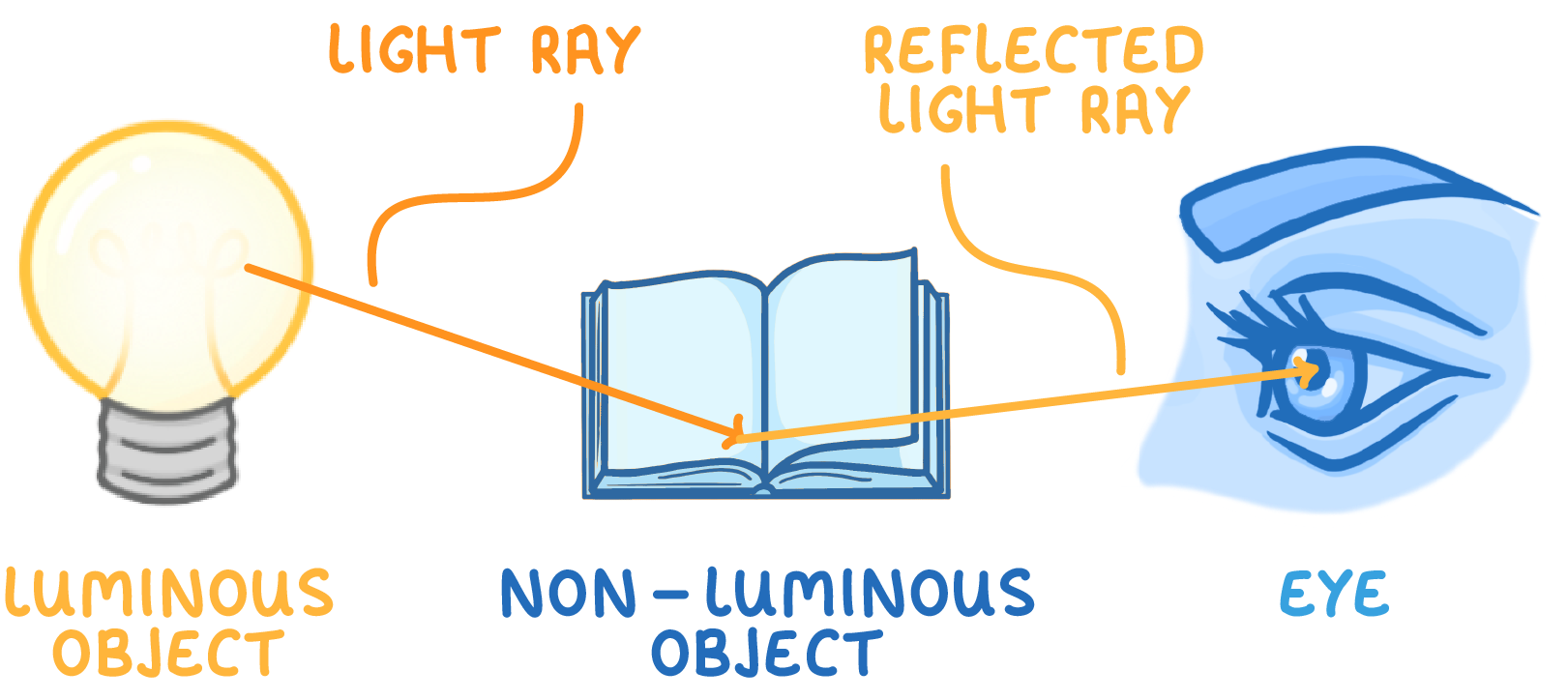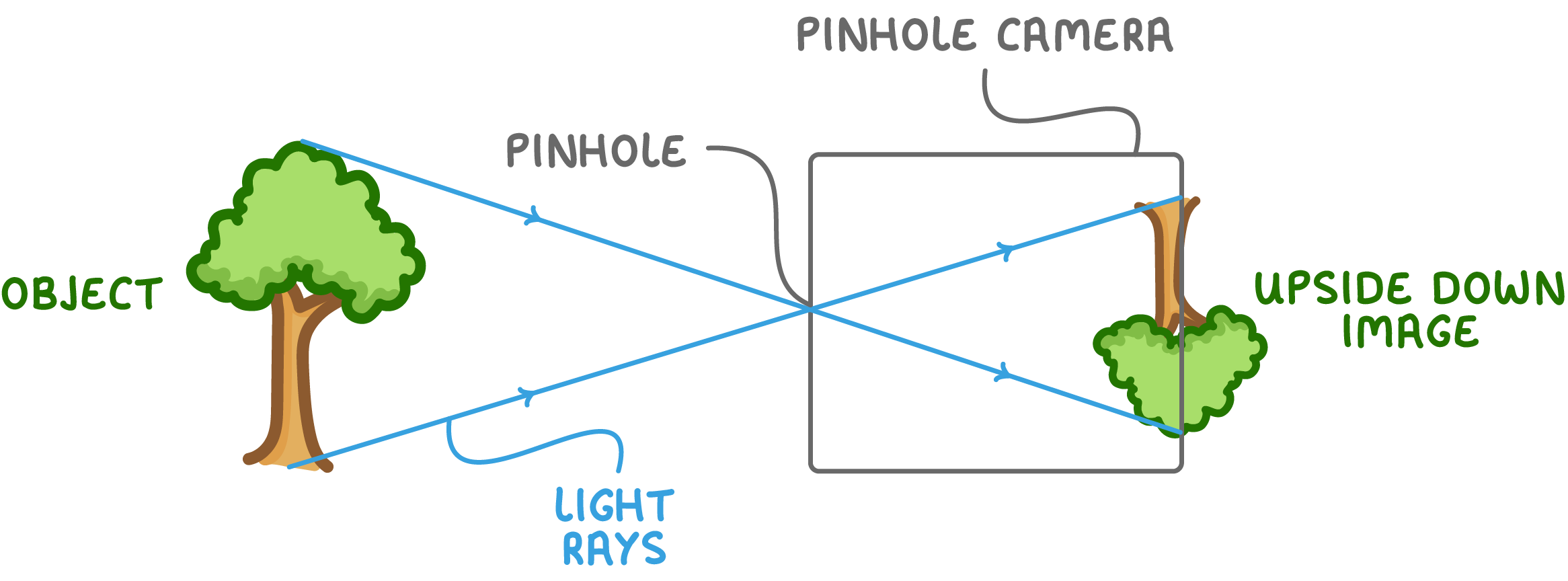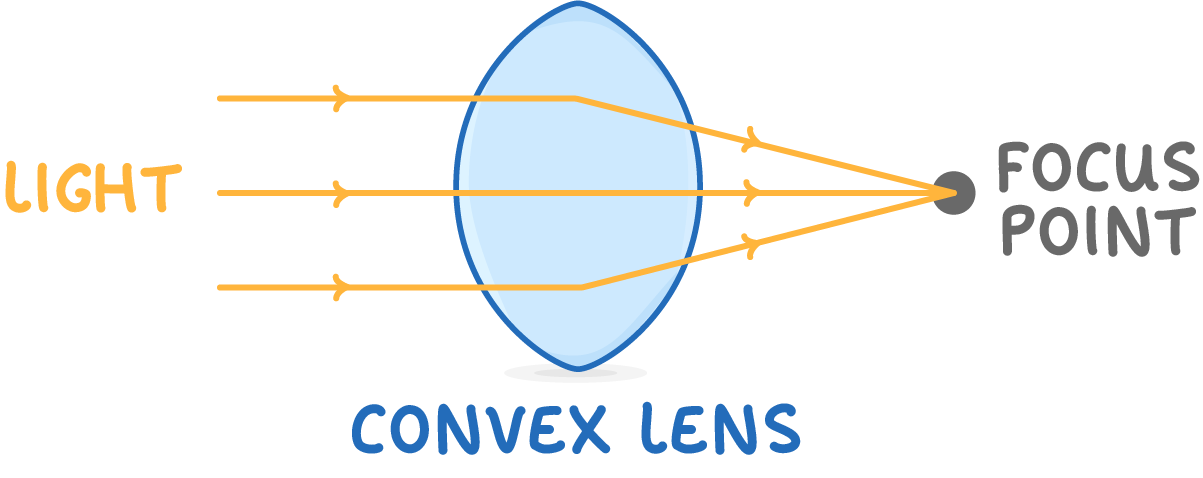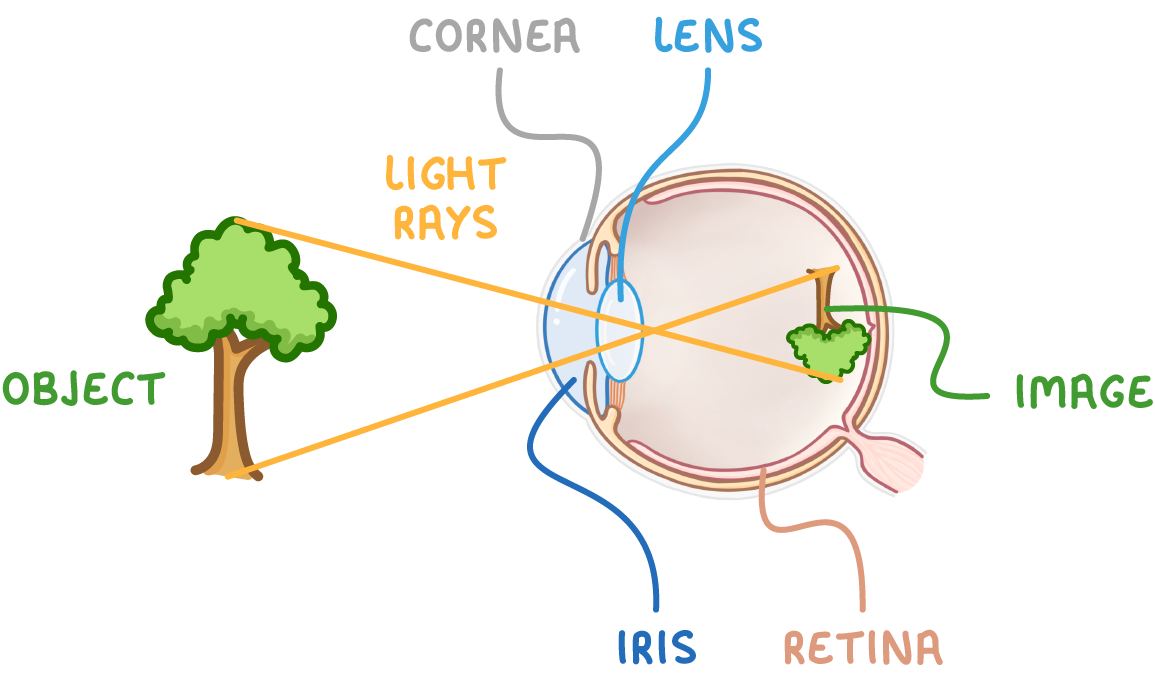How we see
This lesson covers:
- How light allows sight
- How a pinhole camera forms images
- The role of lenses in focusing light
- How light transfers energy to absorbers
We see things because light reflects into our eyes

- Luminous objects emit light rays.
- These light rays reflect off non-luminous objects around us (e.g. a book)
- Some of the reflected light enters our eyes, allowing us to see.
The pinhole camera demonstrates how images are formed
A pinhole camera is a simple device used to form images using light.

- Light travels from an object in straight lines through a small pinhole into the camera.
- As light crosses over inside the camera, the image seen is upside down.
Lenses refract and focus light

- Lenses refract light rays that pass through them.
- Convex lenses bulge outwards and converge (focus) light.
How the eye sees light

- The transparent cornea provides main focusing in the eye.
- The adjustable lens fine-tunes the focus for objects at different distances.
- The iris controls how much light enters the eye.
- Images are formed inverted on the light-sensitive retina.
Light transfers energy to absorbers

Light waves carry energy which is absorbed by detectors.
Absorbers convert this light energy into chemical and electrical signals.
- In the eye, these signals are detected by the retina and sent to the brain allowing sight.
- Digital cameras generate electrical charges representing the image.